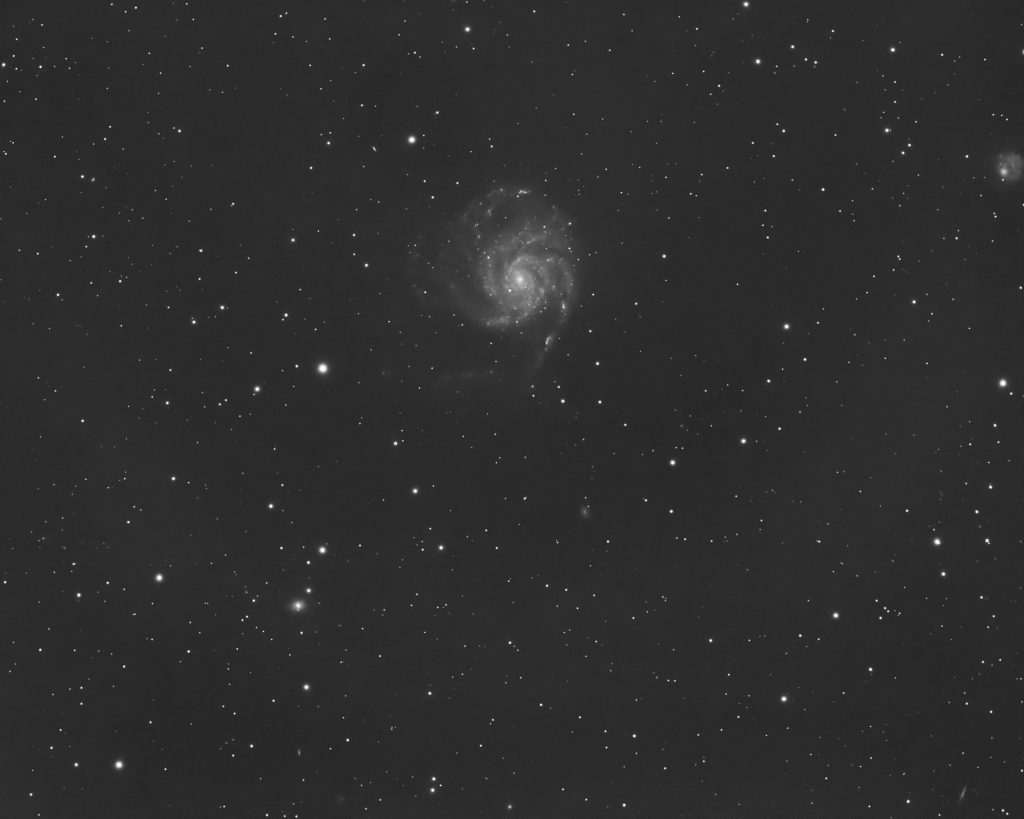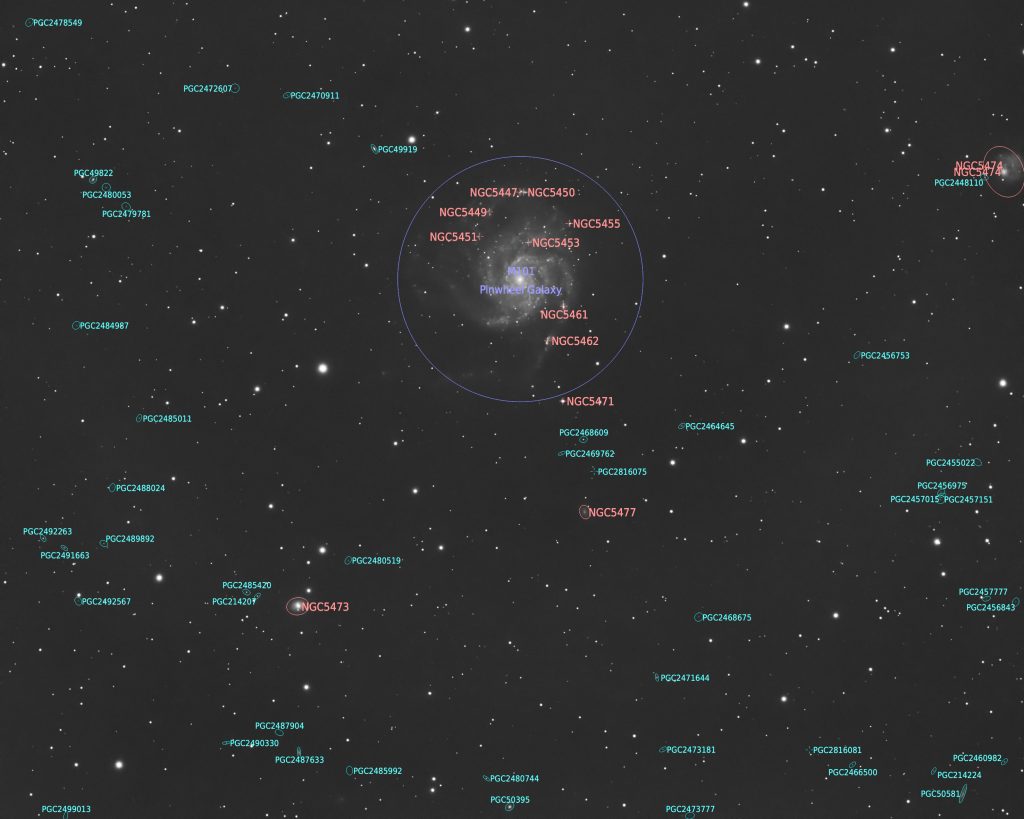
While awaiting the appearance of the Milky Way, not to mention astronomical darkness which won’t come again until July at my northerly latitude, I’ve been having fun snapping photos of galaxies with a 50 mm smart scope and other instruments of modest aperture. I recently tested another diminutive telescope, the Takahashi FOA-60 to see what it could do. While primarily intended to be a visual instrument, this telescope features superb optical quality, but it has a relatively slow focal ratio of f/8.8 which is not ideal for astrophotography. Nevertheless, I hooked up a small camera, the monochrome and highly sensitive ZWO ASI533MM-Pro and a Tele Vue 0.8x focal reducer to coax the optics of this little telescope down to a more reasonable f/7. Then I aimed it up out of the plane of the Milky Way into intergalactic space and snapped some photos of galaxies in and around Ursa Major to see what I could capture.
What I saw was astonishing – bright and nearby galaxies, yes, but also dozens of very faint galaxies some of which are nearly half a billion light years away!
As an example, the image above shows the beautiful face-on spiral galaxy Messier 101. Not a superb image by any means, but not bad for a stack of twenty 60 second exposures from the suburbs. The sky wasn’t even dark, at least not astronomically dark, and I saw a fair bit of twilight glow along the horizon when I made this image around 11 p.m. local time. But there’s plenty of detail in the spiral arms of M101 including knots of star-forming regions in its long, arcing spiral arms. Over on the right side of the image, there’s NGC 5474, a dwarf galaxy and a companion of M101. Both lie relatively nearby – for galaxies – at a distance of 21 million light years. Below and to the left of M101 is the dimmer smudge of NGC 5473, a galaxy unrelated to the M101 and which lies at a distance of 85 million light years.
But I also saw a few fainter smudges such as the tilted spiral galaxy at the extreme lower right of the image, so I suspected there might be many more galaxies in the image than immediately meets the eye. That’s because in this part of the sky we get an unencumbered view out of the dusty plane of the Milky Way deep into intergalactic space away from the dusty plane of the Milky Way. I cranked the imaged through PixInsight’s ‘image solver’ tool to help identify any faint background objects. And sure enough, there are nearly three dozen tiny galaxies in the distant background of this image, some as faint as 16th or 17th magnitude. Not bad for a 60 mm telescope in this small field of about 1.5° x 1.2°.
The image below shows the annotation of these distant ‘milky ways’; most come from the Principal General Catalog (PGC) of some 70,000 faint distant galaxies that lie beyond the limits of visual detection even in a 20″ telescope.

I looked up many of these galaxies on the HyperLEDA database to get an idea of their brightness and distance and found that some are 300 million to nearly 500 million light years away. That means starlight left these galaxies before the first dinosaurs evolved, and roughly during the explosion of complex sea-based life on Earth embedded in the fossilized Burgess shale, when our ancestors were slugs at the bottom of a tropical ocean.
Sure, it’s more fun to look through a telescope compared to looking at an image captured with a telescope (at least I think so). But this small 60 mm telescope, which weighs maybe five or six pounds including the camera, reveals not just several dozen foreground stars in our own galaxy, but also the combined light of perhaps 10 trillion stars in a span of sky less than 2 square degrees. As always, whether we attach a camera to our telescopes or peer through them with an eyepiece, it’s not what we look at that matters, but what we see.
If you’re an astrophotographer out imaging spring galaxies while waiting for the Milky Way to emerge, try to capture a few frames yourself and examine your images for the deep stuff that lies beyond our little galactic backwater on the edge of the Virgo cluster. And let me know what you see!
Share This: